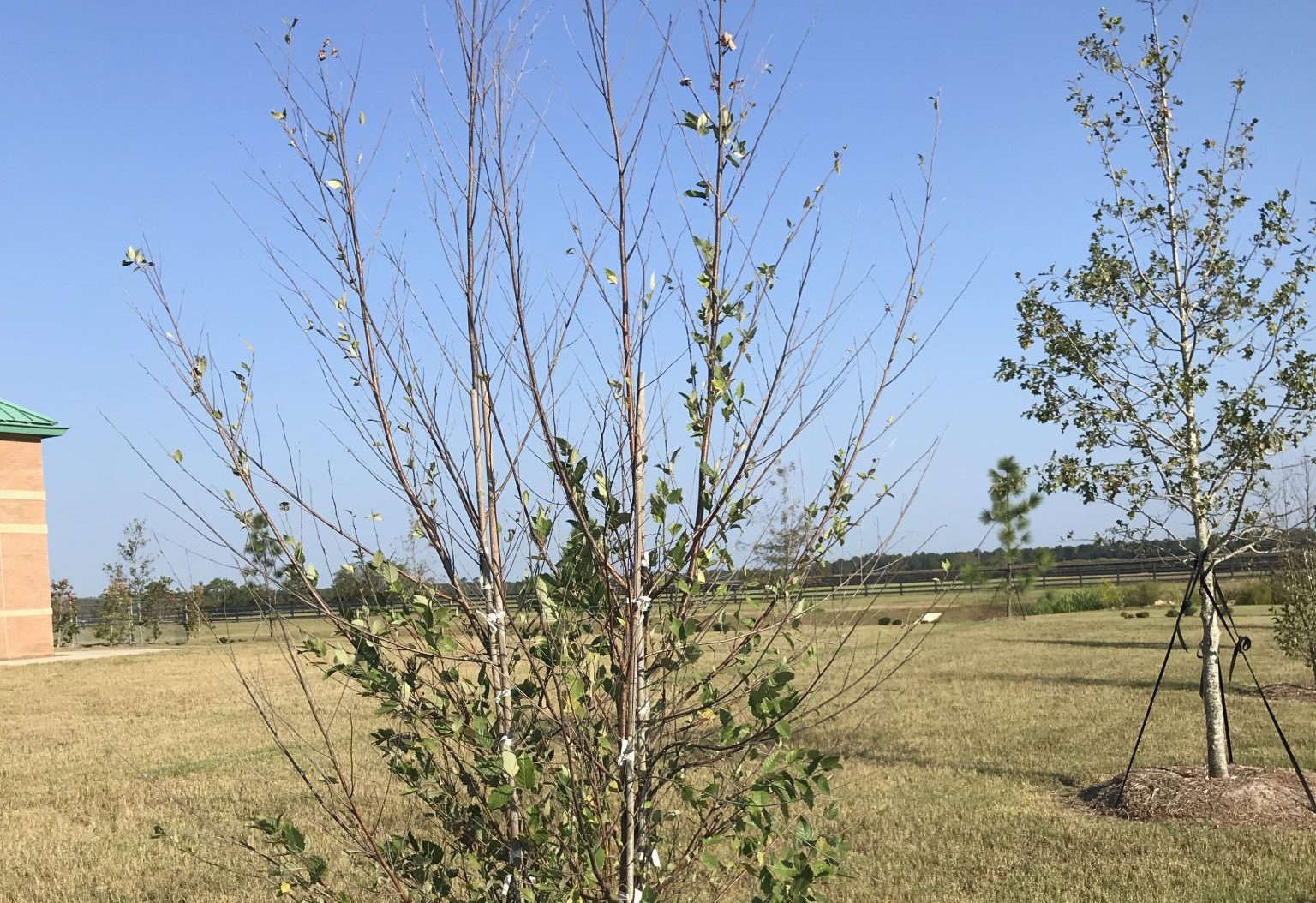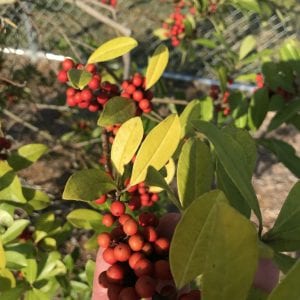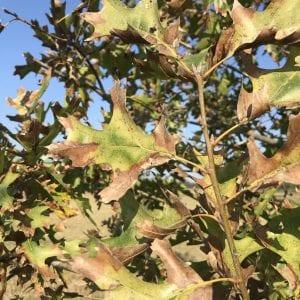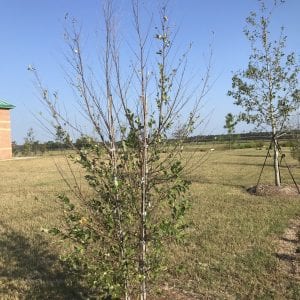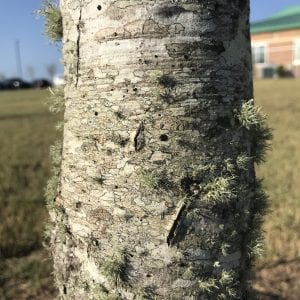Landscaping

Alabama is in the midst of a drought with unusually warm fall weather and trees are beginning to exhibit signs of stress. Droughts, especially prolonged droughts, affect trees and other woody plants in serious ways. The effects are not always immediate and the full extent of the damage to trees can take one to two years to become apparent. As a result, it may become necessary to irrigate certain trees during a drought, assuming there are no water restrictions.
Effects of Drought on Trees
During a drought, the amount of water available in the soil declines to a point where the tree’s roots aren’t capable of absorbing moisture. While most soils will still retain some moisture, the soil “holds on” to this moisture, making it unavailable to trees and other landscape plants.
If these conditions persist, the fine hair-like roots, whose primary function is to absorb moisture, begin to die back. Under prolonged droughts, even the larger, fibrous roots are lost. Once root loss has happened, it can take days to weeks for the trees to re-grow the root hairs necessary to take advantage of rainfall.
Root loss leads to tree stress and dramatic increased susceptibility to a number of insects and diseases. For pine species, pine bark beetles (Ips, Black Turpentine and Southern Pine Beetle) will be a significant concern for the rest of this year and next year as well. In hardwoods, drought can cause trees to be susceptible to insects such as ambrosia beetles, black twig, flathead, and round head borers. Opportunistic disease, such as hypoxylon canker, are common in the months and years following drought events.
Drought Susceptible Trees
Trees in shallow soils will be more susceptible to drought stress. These include trees growing in rocky soils, shallow planters, or compacted soils. These trees will have shallow root systems and will be subjected to hotter and drier surface soils.
Trees adapted to regular short-duration irrigation will develop shallow roots and be subject to drought if irrigation systems are turned off. Trees with deep roots are more resilient to drought and are capable of mining deeper soils. These trees are less likely to be impacted by short-term droughts.
Some species of trees will be more tolerant to drought than others. Trees adapted to flood plains, riverbanks, or swamps will likely suffer greater stresses. Drought tolerant trees by contrast generally have thicker and waxier leaves capable of minimizing water losses through their foliage (all trees transpire moisture through leaf opening called stomata necessary for photosynthesis and growth). Drought tolerant species include:
- most Oaks
- Sassafras
- Hickories
- Persimmon
- Gingko
- Hollies
- Hackberry
- Eastern Red Cedar
- Black and Honey Locust
- Longleaf Pine
- Elms
Signs of Drought Stress in Trees
Signs of drought will be most visible in the foliage of trees. Look for the following symptoms in times of short-term drought.
- Temporary Wilting. Wilting and drooping leaves will occur during the day. Leaves will recover and appear normal by morning.
- Permanent Wilting. As droughts progress, leaves will remain wilted even in the early morning.
- Yellowing Leaves. Prior to dropping foliage, leaves will turn yellow and exhibit fall color. (Figure 1)
- Leaf Scorch. Leaf margins will have a brown or burned appearance. (Figure 2)
- Defoliating Trees. Trees will generally begin to lose their leaves from the top and branch ends. (Figure 3)
- Bark Cracks. During prolonged droughts, trees might develop longitudinal cracks in the bark, especially in thin-barked species like maples. (Figure 4)
- Figure 1: Chlorotic or yellowing leaves
- Figure 2: Leaf Scorch
In long-term droughts, symptoms will appear in a variety of ways.
- Dead Branches. Branch death in the top or outer tips of the tree.
- Thinning Foliage. Tree canopy will appear sparse and slightly yellow in color.
- Small Leaves. Prolonged droughts will cause new leaves to be unusually small.
- Slowed Growth. Growth will slow and nearly halt.
- Increased Susceptibility to Pests. Borers or fungal disease might be evident.
- Become Unable to Close Wounds. Pruning or otherwise.
- Figure 3: Tree defoliating from the top and branch extremities
- Figure 4: Bark cracking due to drought stress. Common in maples
Watering Mature and Established Trees
Water requirements for trees are substantial, particularly for large trees. For example, a full-grown pecan tree, can use nearly 200 gallons of water on a hot, summer day. Over the course of a year, that same pecan tree will use between 3,000 and 6,000 gallons of water.
The majority, 90 percent, of this water is lost through the process of transpiration. This evaporation of water from the leaves allows water molecules, with attached essential nutrients need for growth, to move from the absorbing roots through the trunk and into the branches. Without water, trees are unable to transport nutrients and complete their photosynthetic processes.
Replacing this level of water is difficult, costly, and unsustainable from a water resource perspective. The good news is that it is often unnecessary for most mature and well-established trees. Established trees, with healthy root systems undamaged by recent building construction, will have an expansive root system capable of suppling some of this water. As a result, only supplemental watering is needed to help trees through periodic droughts. The following guidelines can help with watering established trees.
- Identify Stressed Species First. Look for evidence of drought stress (wilting, yellow foliage, leaf drop, etc.). For large, mature trees with undisturbed root systems, water only if signs of drought are evident.
- Check Soil Moisture. The easiest test is to dig a 6 to 9-inch hole. If the soil is cool and moist, you don’t need to water. If the soil is dry, it is time to water.
- Water the Tree’s Entire Growing Area. Roots extend two to three times the tree’s dripline. This makes watering the entire root system difficult. Instead, focus on watering the entire area under the tree’s dripline and a bit beyond, if possible. Covering more area is better. Avoid watering the tree’s trunk or foliage. This can promote disease and insect outbreaks.
- Water Deeply. It is important to ensure water penetrates deep into the soil. For mature trees, deep periodic watering is preferable to frequent shallow irrigation. Frequent shallow irrigation promotes shallow rooting and increasingly less drought-tolerant trees.
- Water Quantity. Start by applying one inch of water once per week. If using a sprinkler, place several small containers in the watering area to measure when you have reached one inch. Measure the time it took to fill those containers to help ensure accurate watering in the future. Finally, wait two hours then dig a 6-inch hole to check and ensure water percolation and deep watering. If the soil is still dry, apply another half inch.
- Watering Frequency. A simple recommendation is to water once per week. However, watering frequency will be dependent on soil type, soil compaction, and slope. For example, sandy soils might be watered only half an inch twice per week. Clay or compacted soils might need longer duration. Be sure you are getting good percolation.
- Timing. It is best to water trees in the early morning hours. This avoids water loss to evaporation during hot summer days. Evening watering runs the risk of promoting fungal diseases by keeping landscapes wet overnight.
Watering Recently Planted Trees
Recently planted (within the last year) or unestablished trees should be watered frequently. Establishment times vary around the country from between 3 to 6 months per caliper inch in diameter. Caliper inch is measured 6 inches above the ground. To ensure survival, water newly planted trees two times a week during the establishment period. For vigorous growth, water trees daily for the first month and two to three times per week for the remainder of the establishment period. Be sure to water trees slowly to prevent runoff and ensure a deep soaking. Using products like Gatorbags, which can be quickly filled and slowly release water, can make watering easier.

